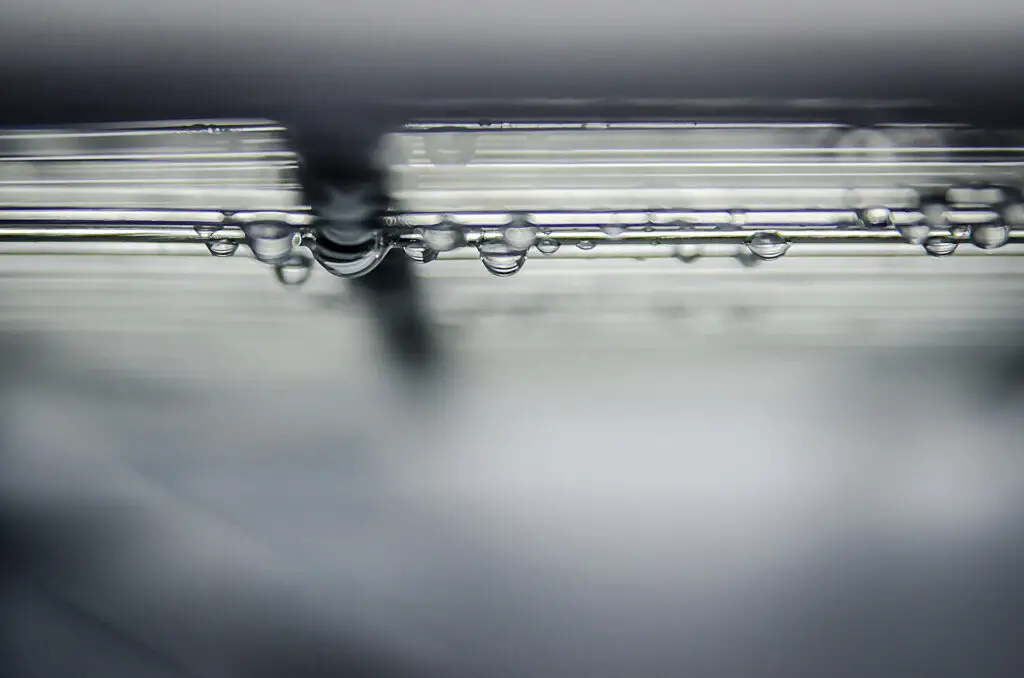The freezer compartment of your refrigerator will accumulate a thick layer of ice (or frost) during its operation. While this is certainly normal for the freezer, is it abnormal if there is ice build-up on the wall of the fridge compartment of your refrigerator?
In most cases, having a thin layer of ice (or frost) on the interior wall of the refrigerator is no cause for concern. This usually happens when the humidity level inside the fridge is high, accompanied by a low temperature setting. Defrosting your refrigerator will solve this problem.
In this article, we will discuss the probable causes why there is a build-up of ice inside your refrigerator, and how this affects its performance.
Why ice forms on the walls of your refrigerator

Ice needs two things to form: water (moisture) and a low temperature environment. Your refrigerator already has the cold part covered; where is the moisture coming from then?
Dewdrops normally form in your fridge during its operation; When the air gets cold, its moisture-holding capability is reduced. This forces the excess moisture in your refrigerator to condense into visible dew drops on its interior walls.
These dewdrops, combined with a low temperature setting, forms the thin layer of ice (frost) on the interior wall of your refrigerator.
How ice on the fridge walls affect its performance
While a thin layer of ice on the interior wall of your refrigerator may seem harmless, it can reduce the performance level of your fridge and cost you money to boot.
Thick ice and frost on the fridge wall will hamper the evaporator’s job of heat transfer, which will cause your compressor to work harder to maintain the proper temperature, thereby increasing its energy consumption.
The ice and frost can also cause freezer burn – a condition that occurs when food becomes dehydrated when it is frozen for a long time. This alters the flavors and the aroma of the food negatively.
Fortunately, the ice build-up can be easily dealt with by defrosting the refrigerator.
Does ice on the fridge walls indicate a problem?
In most cases, having a thin layer of ice (or frost) on the interior wall of the refrigerator, while not being ideal, is normal and should be no cause for concern. This problem comes about during the normal operation of the refrigerator and is easily solved and prevented.
However, when the ice and frost get too thick, it may indicate that there is something wrong with your refrigerator. Either way, you should properly diagnose it to prevent further complications.
Causes of ice build-up in the refrigerator
Here are several reasons why your refrigerator is building up ice on its walls. These are mostly related to misuse. So these problems can be easily solved at no cost to you.
Frequent opening of the door
Opening the refrigerator’s door will introduce warm and moist air to the cold surfaces of the fridge. This will eventually condense into dewdrops on the interior wall, and freeze over if the temperature gets too low,
It’s easy enough to avoid this. Just minimize the amount of time you spend opening the fridge door. Don’t forget to wipe off the condensation from the fridge, as this can cause frost to form in your refrigerator compartment.
Storing hot food in the fridge
When the steam coming from warm food in the refrigerator cools down, it will eventually cause condensation – and thus also frost and ice to form on the walls of the fridge.
Allow your food to cool down before storing them in the fridge. Make sure to keep them covered as well.
Improper airflow
Fan cooling (no frost) models have fans tucked inside the fridge and freezer compartments that distribute the air evenly throughout the refrigerator. If these fans are blocked by an object, it can make the area surrounding the fan much colder than other parts of the fridge.
If you see that there is a thick layer of ice and frost around the fan (also known as the blower) but the other parts of the fridge are “sweating” then this may be the case. Just defrost the fridge then rearrange its contents so that the fans are no longer blocked.
Door gasket not sealing properly
The gasket seal keeps the warm air from the outside from entering the refrigerator while the door is closed. If the gasket is broken on torn, it can leak warm air into the refrigerator which will cause moisture to build up, and thus ice to form.
Most gaskets can be easily replaced by yourself. However, if your unit is still under warranty, you can call a technician and have the gasket replaced.
Malfunctioning thermostat
The thermostat regulates the temperature in the fridge; it tells the compressor when to start or stop.
If this part malfunctions, it can make the temperature inside fluctuate from warm to cold. When it makes the fridge unusually warm, it can coat the surfaces with “sweat” – excess condensation.
Worse, if the thermostat swings to the other side (i.e. extremely cold), it can make this “sweat” freeze – leaving you with a layer of frost on your fridge walls. Defrost this, and call a technician!
Conclusion
In summary, while it isn’t ideal, you should expect a thin layer of ice and frost to form on the interior wall of your refrigerator. The fix normally entails a quick defrost and then you are good to go.

Miguel Mores worked for 5 years as a member of the product management team for a home appliance company in the Philippines. He started 101appliance to answer the most common customer questions that he has encountered during his time in the industry. He now works in the digital marketing field and manages a small online bookstore on the side.

